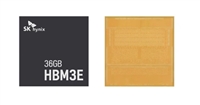| 是否无铅: | 含铅 | 是否Rohs认证: | 不符合 |
| 生命周期: | Obsolete | 零件包装代码: | SOIC |
| 包装说明: | SOP, SOP8,.25 | 针数: | 8 |
| Reach Compliance Code: | unknown | ECCN代码: | EAR99 |
| HTS代码: | 8542.32.00.51 | 风险等级: | 5.68 |
| 其他特性: | 16 BYTE PAGE WRITE MODE; DATA RETENTION > 40 YEARS | 最大时钟频率 (fCLK): | 0.4 MHz |
| 数据保留时间-最小值: | 40 | 耐久性: | 1000000 Write/Erase Cycles |
| I2C控制字节: | 1010MMMR | JESD-30 代码: | R-PDSO-G8 |
| JESD-609代码: | e0 | 长度: | 4.9 mm |
| 内存密度: | 16384 bit | 内存集成电路类型: | EEPROM |
| 内存宽度: | 1 | 功能数量: | 1 |
| 端子数量: | 8 | 字数: | 16384 words |
| 字数代码: | 16000 | 工作模式: | SYNCHRONOUS |
| 最高工作温度: | 85 °C | 最低工作温度: | -40 °C |
| 组织: | 16KX1 | 封装主体材料: | PLASTIC/EPOXY |
| 封装代码: | SOP | 封装等效代码: | SOP8,.25 |
| 封装形状: | RECTANGULAR | 封装形式: | SMALL OUTLINE |
| 并行/串行: | SERIAL | 峰值回流温度(摄氏度): | NOT SPECIFIED |
| 电源: | 5 V | 认证状态: | Not Qualified |
| 座面最大高度: | 1.75 mm | 串行总线类型: | I2C |
| 最大待机电流: | 0.00005 A | 子类别: | EEPROMs |
| 最大压摆率: | 0.001 mA | 最大供电电压 (Vsup): | 5.5 V |
| 最小供电电压 (Vsup): | 4.5 V | 标称供电电压 (Vsup): | 5 V |
| 表面贴装: | YES | 技术: | CMOS |
| 温度等级: | INDUSTRIAL | 端子面层: | Tin/Lead (Sn/Pb) |
| 端子形式: | GULL WING | 端子节距: | 1.27 mm |
| 端子位置: | DUAL | 处于峰值回流温度下的最长时间: | NOT SPECIFIED |
| 宽度: | 3.9 mm | 最长写入周期时间 (tWC): | 10 ms |
| Base Number Matches: | 1 |
| 型号 | 品牌 | 替代类型 | 描述 | 数据表 |
| NM93C86ALM8X | FAIRCHILD |
功能相似  |
EEPROM, 1KX16, Serial, CMOS, PDSO8, 0.150 INCH, PLASTIC, SO-8 |

|
| NM93C86AEM8X | FAIRCHILD |
功能相似  |
EEPROM, 1KX16, Serial, CMOS, PDSO8, 0.150 INCH, PLASTIC, SO-8 |

|
| M24C16-MN3T/G | STMICROELECTRONICS |
功能相似  |
16Kbit, 8Kbit, 4Kbit, 2Kbit and 1Kbit Serial I2C Bus EEPROM |

|
| 型号 | 品牌 | 获取价格 | 描述 | 数据表 |
| NM24C16FEM8X | TI |
获取价格 |
2KX8 I2C/2-WIRE SERIAL EEPROM, PDSO8, PLASTIC, SOP-8 |

|
| NM24C16FEMT8 | FAIRCHILD |
获取价格 |
I2C Serial EEPROM |

|
| NM24C16FEN | FAIRCHILD |
获取价格 |
I2C Serial EEPROM |

|
| NM24C16FLEM8 | TI |
获取价格 |
2KX8 I2C/2-WIRE SERIAL EEPROM, PDSO8, PLASTIC, SOP-8 |

|
| NM24C16FLEM8 | FAIRCHILD |
获取价格 |
EEPROM, 16KX1, Serial, CMOS, PDSO8, PLASTIC, SOIC-8 |

|
| NM24C16FLEM8X | FAIRCHILD |
获取价格 |
EEPROM, 16KX1, Serial, CMOS, PDSO8, PLASTIC, SOIC-8 |

|
| NM24C16FLEM8X | TI |
获取价格 |
IC 2K X 8 I2C/2-WIRE SERIAL EEPROM, PDSO8, PLASTIC, SOP-8, Programmable ROM |

|
| NM24C16FLEMT8 | FAIRCHILD |
获取价格 |
I2C Serial EEPROM |

|
| NM24C16FLEN | FAIRCHILD |
获取价格 |
I2C Serial EEPROM |

|
| NM24C16FLEN | TI |
获取价格 |
2KX8 I2C/2-WIRE SERIAL EEPROM, PDIP8, PLASTIC, DIP-8 |

|
 塔塔电子与力积电达成技术转让协议,携手建设印度首座晶圆厂
塔塔电子与力积电达成技术转让协议,携手建设印度首座晶圆厂

 英特尔震撼发布:128核心256线程的至强6性能核处理器
英特尔震撼发布:128核心256线程的至强6性能核处理器

 SK海力士量产12层HBM3E,容量高达36GB
SK海力士量产12层HBM3E,容量高达36GB

 意法半导体传感器驱动Sphere,开启沉浸式电影新时代
意法半导体传感器驱动Sphere,开启沉浸式电影新时代
